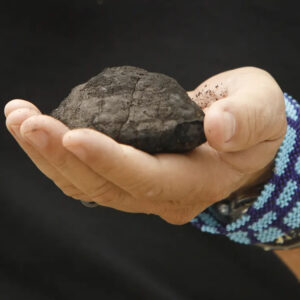Gerard Barron, chairman and CEO of The Metals Company, holds a nodule retreived from the seafloor in the Clarion Clipperton Zone of the Pacific Ocean in 2021. The company plans to mine for these nodules, which researchers suggest produce oxygen underwater
Twelve thousand feet under the ocean surface is a world of eternal midnight. No sunlight can penetrate to this depth to promote photosynthesis, so no plants are producing oxygen there. Yet, the life-supporting gas is abundant in this darkness-cloaked region, thanks to an unlikely oxygen factory: potato-sized, “battery rocks” on the seafloor.
New research published this week in the journal Nature Geoscience reveals that nature has devised a way to produce oxygen without the involvement of plants. It’s “an amazing and unexpected finding,” Daniel Jones, a researcher at the National Oceanography Center in the United Kingdom who wasn’t involved in the study.
Previously, scientists had understood oxygen to be the product of life itself, namely created by photosynthesizing autotrophs such as plants and algae. But the new study overturns that simplistic narrative. In fact, the discovery was so astonishing that, when lead author Andrew Sweetman first measured this “dark oxygen” in the Pacific Ocean’s Clarion-Clipperton Zone in 2013, he dismissed it outright.
“I just ignored it, because I’d been taught—you only get oxygen through photosynthesis,” Sweetman, an ecologist with the Scottish Association for Marine Science, tells Victoria Gill of BBC News. “Eventually, I realized that for years I’d been ignoring this potentially huge discovery.”




